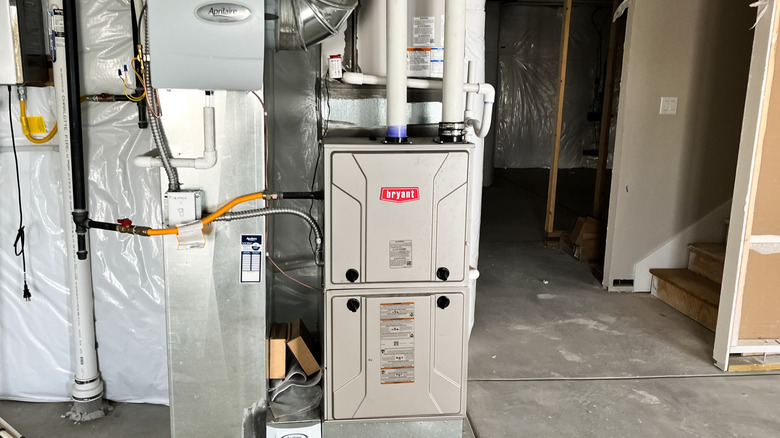How To Install A Condensate Pump For Your HVAC Unit Like A Pro
Imagine: It's the middle of summer and your air conditioner is working overtime to keep your home cool and comfortable. Suddenly, you notice water pooling around your HVAC unit. Before long, a musty smell creeps through your house. You should not ignore these warnings signs from your HVAC system, as they show that the condensate produced by the system isn't draining properly. And without an effective way to get the condensate to a suitable drain, you could face water damage, mold growth, or even a complete system breakdown.
A condensate pump can prevent these issues and prolong the life of your HVAC system. These pumps are designed to collect and remove the water your HVAC system produces via condensation by storing it and then pumping it to a safe location. Installation is typically a breeze, too, involving nothing more than connecting pipes from the HVAC unit to the pump, and from the pump to the drain. The steps might seem daunting at first, but in most cases, you should be able to handle the task yourself like a pro.
Steps to install your HVAC unit's condensate pump
First, turn off the HVAC system and disconnect it from the power source. Then find a nearby flat surface where the pump can sit without tilting or vibrating, since stability is crucial to its effectiveness. Remember not to block the vents of the pump to avoid overheating. Next, cut the end of the HVAC system's drainpipe at a 45-degree angle and connect it to the flexible tubing that came with the pump (if it didn't, use clear tubing to easily spot clogs in the lines). Then connect the other end to the inlet port. Use zip ties or plumber's tape to reinforce the connection.
After that, connect the discharge line that will transport water to a designated drainage area, like a drain or a sink. If the tubing needs to go upward, make sure that it slopes properly to allow the pump to push the water efficiently. Condensate pumps come with a power cord that easily plugs into an outlet. However, consult a professional if you're uncomfortable with this step, or if an outlet isn't available and hardwiring the pump is the only option. When everything is set, turn the power back on, test the device, and confirm that water is being expelled efficiently. Check for debris buildup in the pump when you clean your HVAC system.
While installing the pump, keep your hands dry and stay off wet surfaces to avoid electrocution. Don't touch the pump's components when it's running and plugged into a power source. Installing a pump might seem challenging, but following these steps and taking precautions can make the process smooth.
